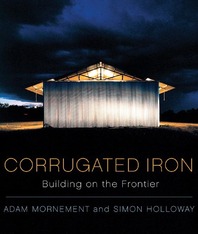
Corrugated Iron
Building on the Frontier
8 January 2008
Territory Rights — Worldwide including Canada, but excluding the British Commonwealth.
Description
When Henry Palmer of the London Dock Company was granted the first patent for “indented or corrugated metallic sheets” in 1829, he little realized what he was starting.
Reviews
"What makes this book more than eye candy is the authors’ exhaustive treatment. Clearly they love the subject." — Architect Magazine
"[A] well-researched, well-written and engaging narrative….Highly recommended for designers generally and anyone broadly interested in design and design history." — Curve
"[F]ascinating…follows the rich and varied history of this versatile material…[A] well-researched, well-written and engaging narrative." — Kathy Fox, Curve
"[A] fascinating study." — Mia Jacobi, Desert Living
"This is a book that heralds the array of uses and finally gives corrugated metal its moment in the sun." — David Lake, FAIA, Lake Flato Architects
"This tells the evolving story of the material in a thoughtful way, with an obvious passionate love for the material." — The Architectural Review
"Corrugated metal surely stands alongside the great inventions, a democratic and international material...[A]n enthralling piece of social and global history." — Edwin Heathcote, The Financial Times
"[C]atnip to architecturally minded modernists….the book is replete with fascinating reproductions of posters, catalog copy, and architectural renderings….a wonderful book." — Daniel Akst, Wilson Quarterly
"[C]atnip to architecturally minded modernists….the book is replete with fascinating reproductions of posters, catalog copy, and architectural renderings….a wonderful book." — Daniel Akst, Wilson Quarterly
"A book that heralds the array of uses and finally gives corrugated metal its moment in the sun." — David Lake, FAIA, Lake|Flato Architects


